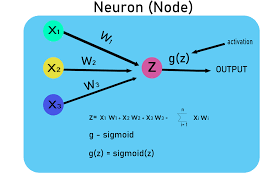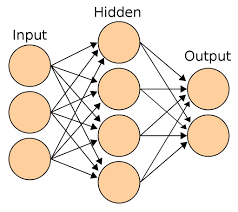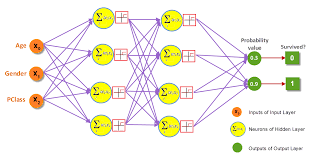Neural networks have revolutionized the field of artificial intelligence, enabling machines to learn from data and make decisions in a way that mimics the human brain. In this article, we will explore the basics of building a neural network using Python, a popular programming language known for its simplicity and versatility.
To get started with creating a basic neural network in Python, we first need to install the necessary libraries. Two of the most commonly used libraries for neural network development are NumPy and Keras. NumPy is a powerful library for numerical computing, while Keras provides a high-level interface for building and training neural networks.
Once we have installed these libraries, we can begin by defining our neural network architecture. A basic neural network consists of three main components: an input layer, one or more hidden layers, and an output layer. Each layer is made up of neurons that perform computations on the input data.
Next, we need to define the structure of our neural network by specifying the number of neurons in each layer and the activation function to be used. The activation function introduces non-linearity into the model and allows it to learn complex patterns in the data.
After defining the architecture of our neural network, we can move on to training it using a dataset. The training process involves feeding input data into the network, calculating the output based on the current weights and biases, comparing it to the actual output (the ground truth), and adjusting the weights using optimization algorithms such as gradient descent.
Once our neural network has been trained on a sufficient amount of data, we can evaluate its performance using a separate test dataset. This allows us to assess how well the model generalizes to new, unseen data and make any necessary adjustments to improve its accuracy.
In conclusion, building a basic neural network in Python is an exciting journey into the world of artificial intelligence and machine learning. By leveraging powerful libraries such as NumPy and Keras, developers can create sophisticated models that can learn from data and make intelligent decisions. With practice and experimentation, anyone can master the art of designing neural networks and unlock their full potential in solving complex real-world problems.
5 Essential Tips for Building Neural Networks in Python
- Start by understanding the basics of neural networks and how they work.
- Use libraries like TensorFlow or PyTorch to easily build neural networks in Python.
- Preprocess your data properly before feeding it into the neural network.
- Experiment with different network architectures and hyperparameters to improve performance.
- Regularly monitor and adjust your model to prevent overfitting and ensure optimal results.
Start by understanding the basics of neural networks and how they work.
To successfully build a basic neural network in Python, it is essential to begin by gaining a solid understanding of the fundamentals of neural networks and their underlying mechanisms. By grasping the basics of how neural networks function, including concepts such as neurons, layers, activation functions, and training processes, you can lay a strong foundation for creating effective and efficient models. This knowledge will not only guide you in structuring your neural network architecture but also help you make informed decisions throughout the development and optimization phases. Ultimately, starting with a comprehensive understanding of neural networks is key to unlocking their full potential and harnessing their power in solving complex problems through machine learning.
Use libraries like TensorFlow or PyTorch to easily build neural networks in Python.
To easily build neural networks in Python, it is highly recommended to utilize powerful libraries such as TensorFlow or PyTorch. These libraries offer a wide range of pre-built functions and modules that simplify the process of designing, training, and evaluating neural networks. By leveraging the capabilities of TensorFlow or PyTorch, developers can focus more on the high-level aspects of their neural network design and implementation, rather than getting bogged down in the nitty-gritty details of low-level operations. This approach not only streamlines the development process but also allows for faster experimentation and iteration, leading to more efficient and effective neural network models.
Preprocess your data properly before feeding it into the neural network.
Properly preprocessing your data before feeding it into the neural network is a crucial step in ensuring the success and accuracy of your model. Data preprocessing involves tasks such as cleaning, normalization, and transformation to make the input data more suitable for training. By preparing the data effectively, you can improve the performance of your neural network, reduce overfitting, and help the model learn more efficiently from the input information. Investing time and effort in preprocessing your data can lead to better results and a more robust neural network that is capable of handling a wide range of real-world scenarios.
Experiment with different network architectures and hyperparameters to improve performance.
To enhance the performance of your basic neural network in Python, it is crucial to experiment with various network architectures and hyperparameters. By adjusting the number of layers, neurons, activation functions, learning rates, and other parameters, you can fine-tune your model to achieve better accuracy and efficiency. Through systematic exploration and analysis of different configurations, you can uncover the optimal settings that maximize the neural network’s capabilities and enable it to excel in handling complex tasks with precision and speed.
Regularly monitor and adjust your model to prevent overfitting and ensure optimal results.
To ensure optimal performance of your basic neural network in Python, it is crucial to regularly monitor and adjust your model to prevent overfitting. Overfitting occurs when a model learns the training data too well, to the point that it performs poorly on new, unseen data. By monitoring the model’s performance on both training and validation datasets, you can identify signs of overfitting and make necessary adjustments, such as reducing the complexity of the model or adding regularization techniques. This proactive approach will help maintain the generalization ability of your neural network and ensure that it delivers accurate and reliable results in real-world applications.




